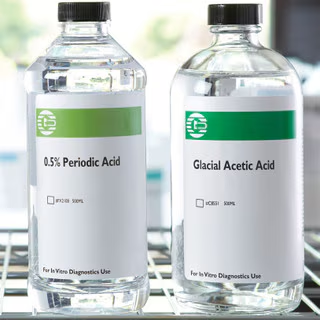Description
Acetic acid, also known as glacial acetic acid when in its pure form, is a colorless, pungent-smelling liquid that plays a pivotal role in various industrial and laboratory applications. With the chemical formula CH₃COOH, it is the simplest carboxylic acid and is characterized by its sour taste and strong acidity. Glacial acetic acid is highly concentrated, typically containing at least 99% acetic acid, and is distinguished from diluted vinegar solutions, which usually contain only about 5-7% acetic acid. Due to its strong acidity, glacial acetic acid can act as both a solvent and a reagent, making it essential in the production of a wide array of chemicals, including acetic anhydride, acetate esters, and various synthetic fibers.
In the laboratory, glacial acetic acid is frequently used as a solvent, particularly for reactions that require a polar aprotic medium. Its ability to dissolve a wide range of organic compounds allows chemists to utilize it in organic synthesis, particularly in the production of pharmaceuticals and other fine chemicals. Additionally, glacial acetic acid serves as an important reagent in biochemical and molecular biology studies, where it is often employed in techniques such as gel electrophoresis. However, due to its corrosive nature, precautions must be taken when handling glacial acetic acid, as it can cause severe burns and irritation upon contact with skin or mucous membranes.
In addition to its chemical applications, glacial acetic acid is also significant in food processing and preservation. It can be used for pickling vegetables and as a flavoring agent, with its sharp, tangy taste enhancing the overall profile of various dishes. However, food-grade acetic acid must meet strict safety standards to ensure it is safe for consumption. Overall, the multifaceted nature of glacial acetic acid, spanning from industrial applications to everyday uses, underscores its importance in both scientific and culinary contexts.















